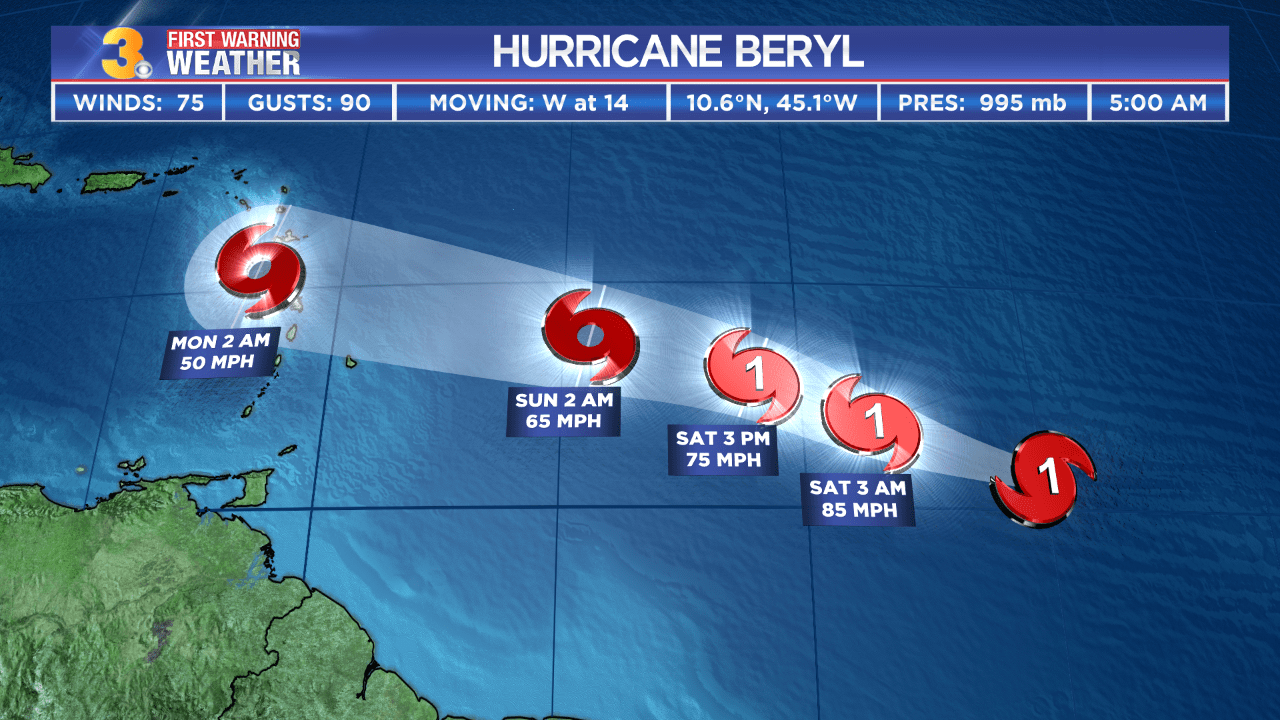Impact of Hurricane Beryl on Jamaica: Hurricane Beryl Jamaica

Hurricane beryl jamaica – Hurricane Beryl, a Category 1 hurricane, made landfall in Jamaica on July 5, 2023. The storm brought heavy rainfall, strong winds, and storm surges, causing widespread damage and flooding.
The hurricane’s path took it across the eastern and central parts of the island, with the most severe impacts felt in the parishes of Portland, St. Thomas, and St. Mary. Winds reached speeds of up to 140 kilometers per hour (85 miles per hour), causing significant damage to infrastructure, homes, and businesses.
Hurricane Beryl a di tear up Jamaica bad. Rain a fall, wind a blow, and di sea a rough. People dem a watch di spaghetti models for Beryl fi see weh it a guh do next. If it keep guh di way it a guh now, it could be a bad one.
People need fi stay safe and listen to di authorities.
Infrastructure Damage, Hurricane beryl jamaica
- Power outages affected over 200,000 people, with some areas experiencing outages for several days.
- Water supply was disrupted in several communities, leaving residents without access to clean water.
- Roads and bridges were damaged or blocked by fallen trees and debris, hindering transportation and emergency response efforts.
Economic Losses
The economic impact of Hurricane Beryl is still being assessed, but preliminary estimates suggest that the damage could exceed US$100 million. The tourism sector, a major contributor to Jamaica’s economy, was particularly hard hit, with several hotels and resorts sustaining damage.
The hurricane also caused significant losses in the agricultural sector, with crops and livestock being destroyed. Small businesses were also impacted, with many forced to close due to damage or loss of inventory.
Beryl come hard pon Jamaica, but den it head straight up to Barbados. Barbados get dey hurricane too, but Beryl no stay long dey. It come back down pon Jamaica and give we more rain and wind. Beryl gone now, but we still a clean up.
Barbados hurricane bad too, but Jamaica get it worse. We glad Beryl gone, but we no forget what it do.
Relief and Recovery Efforts

In the aftermath of Hurricane Beryl, the Jamaican government and international organizations swiftly mobilized to provide relief and support to the affected communities.
The government established emergency shelters and coordinated the distribution of food, water, and medical supplies to those in need. International organizations such as the Red Cross and United Nations provided additional aid, including tarpaulins, blankets, and hygiene kits.
Distribution of Aid
- Food: The government and aid organizations distributed non-perishable food items, including canned goods, rice, and beans, to affected families.
- Water: Clean drinking water was a priority, and water purification tablets and bottled water were distributed to ensure access to safe drinking water.
- Shelter: Emergency shelters were set up in schools, community centers, and other public buildings to provide temporary housing for those whose homes were damaged or destroyed.
Recovery Process
The recovery process in Jamaica following Hurricane Beryl was challenging but steady. The government allocated funds for rebuilding infrastructure, including roads, bridges, and schools. Community organizations and volunteers played a vital role in cleaning up debris and providing support to affected residents.
Challenges faced during the recovery process included the lack of resources, the extent of the damage, and the need to balance immediate relief efforts with long-term rebuilding plans.
Climate Change and Hurricane Beryl

Hurricane Beryl’s intensity and destructive impact have raised concerns about the potential role of climate change in exacerbating hurricane activity. While the exact relationship between climate change and individual hurricanes is complex and challenging to establish, scientific evidence suggests a link between the two.
Research indicates that climate change is contributing to warmer ocean temperatures, which provide more energy for hurricanes to form and intensify. Additionally, rising sea levels can lead to higher storm surges, increasing the risk of coastal flooding and erosion.
Warmer Ocean Temperatures
- Warmer ocean temperatures provide more energy for hurricanes, allowing them to reach higher intensities.
- Studies have shown a correlation between increasing sea surface temperatures and the intensity of hurricanes.
- Hurricane Beryl formed over unusually warm waters in the Caribbean Sea, which may have contributed to its rapid intensification.
Rising Sea Levels
- Rising sea levels lead to higher storm surges, which can cause extensive coastal flooding and erosion.
- As sea levels rise, storm surges can reach further inland, causing more damage and displacing communities.
- Jamaica and other Caribbean nations are particularly vulnerable to storm surges due to their low-lying coastal areas.
Implications for Jamaica and the Caribbean
The potential implications of climate change for Jamaica and other Caribbean nations are significant. More intense hurricanes can cause widespread destruction, loss of life, and economic disruption.
- Increased coastal flooding and erosion can displace communities and damage infrastructure.
- More intense hurricanes can disrupt tourism, a vital industry for many Caribbean nations.
- Climate change adaptation and mitigation measures are crucial for reducing the vulnerability of Caribbean nations to future hurricanes.